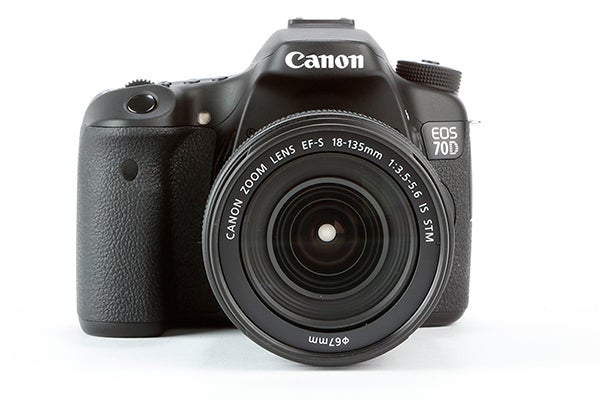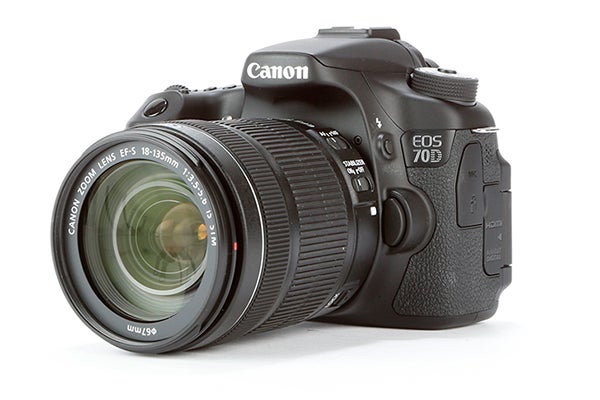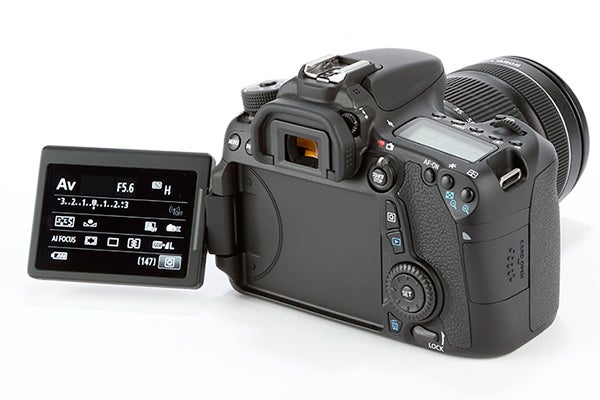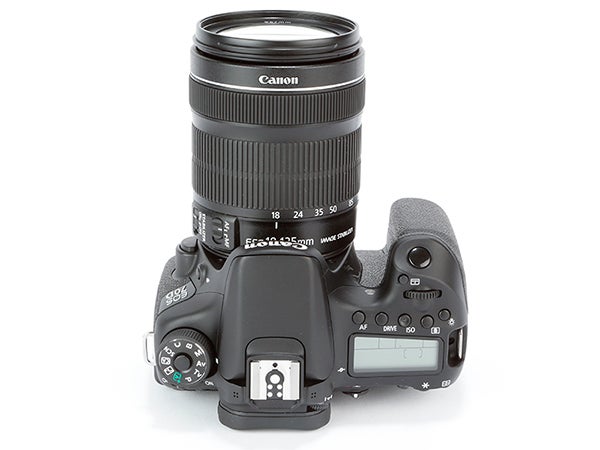Canon EOS 70D Review
Canon EOS 70D
Canon's 60D replacement has a brand new kind of super-fast AF sensor.

Sections
- Page 1 Canon EOS 70D Review
- Page 2 Design and Performance Review
- Page 3 Image Quality and Verdict Review
Verdict
Pros
- Great touchscreen performance
- Impressive 19-point AF system
- Dual-pixel sensor AF delivers fantastic Live-view AF performance
- Solid build
Cons
- Slight issues with AWB performance
- Limited creative filter implementation
Key Specifications
- Review Price: £1079.00
- 20.2MP APS-C CMOS sensor; 3-inch, 1040k-dot vari-angle LCD touchscreen; Canon EF-S lens mount; ISO 100 – 12,800 (expandable to 25,600); 1920 x 1080 HD video capture @ 30, 25 and 24fps
What is the Canon EOS 70D?
The 70D is nothing less than the big DSLR release of 2013. The ground between Canon’s single-digit and triple-digit DSLRs has long housed some impressive cameras, catering for those looking to take the step up from entry-level DSLR photography.
Indeed, the double-digit range has boasted some of Canon’s most popular models to date, and the Canon EOS 70D looks to continue this tradition. In many ways its specs places it ahead of it’s more advanced, yet older, sibling – the 7D – including a newly developed sensor that promises some impressive AF performance. It’s a camera every camera enthusiast will be interested in no matter their loyalites.
SEE ALSO: Best DSLRs round-up

Canon EOS 70D: Features
Although the Canon EOS 70D breaks new ground for Canon in certain areas, it still borrows extensively from other EOS DSLRs. For example, the 70D features Canon’s DIGIC 5 processor as seen previously in the EOS 5D Mk.III.
But you can see why Canon decided to reuse the processor, as it facilitates some impressive data processing and as a result allows for 7fps continuous shooting and ISO range of 100-12,800, expandable to 25,600.
On the rear of the 70D you’ll find another another familiar feature from the Canon EOS stable. The rear features the same 3-inch, 1,040k-dot vari-angle touchscreen as seen on the EOS 700D. Once again, the touchscreen on the 700D is one of the finest on the market, so the borrowing of such a feature is certainly a good thing.

The Canon EOS 70D also benefits from the EOS range’s HD video heritage. The model supports full HD video capture at 30, 25 and 24p, as well as standard HD at both 60 and 50p, while an external microphone is also supported.
The Full HD video capture is an area that is sure to benefit from the 70D’s headline improvement, namely the model’s sensor. Since 2009 Canon APS-C DSLRs have relied upon a sensor with an 18MP resolution, but the 70D features a completely redesigned unit. The megapixel count has been upped to 20.2MP, with the real development being the addition of Dual Pixel CMOS technology.
This sensor now features on-chip phase-detection AF technology, which utilises two photodiodes on each pixel and therefore does away with the need to use contrast-detection AF technology in video mode and live view. The system also benefits from an advanced 19-point all cross-type AF system, up from the modest 9-point system found in the 60D.
The result? Faster AF performance in general shooting and a complete transformation of AF in live view and movie recording modes. At least, that’s what Canon claims.

The Canon EOS 70D also benefits from the addition of in-camera Wi-Fi technology, as is becoming more common on new DSLRs. This Wi-Fi connectivity allows for wireless transfer of images between the 70D and a smartphone or tablet running the Canon EOS app. Photographers also have the option to remotely control the 70D using the app; a feature which could be of great benefit for those on a studio shoot.
Another impressive feature is the 70D’s in-built flash. It boasts a guide number of 12 and doubles up as an Integrated Wireless Transmitter for off-camera wireless flash control of compatible Canon flashguns.

